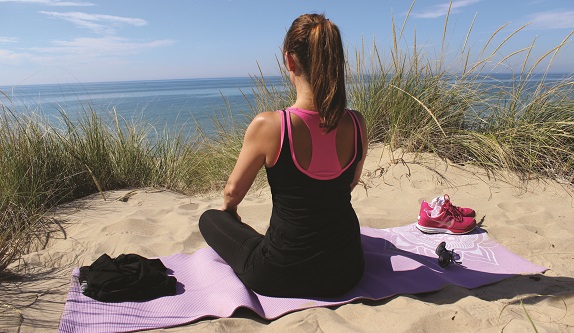There are even conflicts between the mantras of traditional yogis and the flair of modern design, Lee Carsley says.

I confess – I’m a yogi style queen. I have transferred my passion for all things stylish in shoes and handbags to yoga clothes. My Jimmy Choos look mournfully at me underneath some yoga mats. My Balenciaga handbag scowls at me hanging behind some yoga capri pants and sports tops.
Yogis build their lives on a set of moral values called yamas and niyamas. One yama is aparigraha, roughly translated as ‘non-greed’, ‘non-possessiveness’, and ‘non-attachment’. This yama teaches to take only what we need, keep only what serves us in the moment, and to let go when the time is right.
Is style a want or a need?
If I was a monk, I wouldn’t need much. My food is given to me daily, and my robes replaced when they fall apart. I have, though, seen monks in Cambodia and Thailand with mobile phones. Could it be that my yoga clothes are like those monk’s mobile phones – a want, and not a need?
If I look in my wardrobe, I do have too many clothes, shoes and handbags, and they were very public hallmarks of success –beautiful and well-designed. I have not worn them for years, and yet cannot bear to throw them away.
It’s a matter of balance…
When it became obvious that I could not wear these clothes as a yoga teacher – imagine a Ferragamo winter suit on a yoga mat – I made a conscious choice to keep my selection small. I chose companies which pay their employees reasonable wages, and who have thought enough about yoga fabric to make sure it looks good even after five Singapore washes. Those who design with the understanding that everybody is different, as well as look beautiful – for me this meant funky prints, with vibrant, happy colours – were also considered.
I think I am taking only what I need. However, they are not cheap – but then I buy products made in sweatshops, with poor quality fabric. So I end up having to buy more frequently.
Why am I still concerned?
I do have a tendency to want to buy all things beautiful, not just some things – hence the wardrobe. The more we hoard material possessions, the more we attach to and worry about losing these possessions. We start off buying stuff thinking it will make us happy, then one day we have so much to worry about that we are unhappy!
I don’t want to be one of those people again. I can remember what it felt like – on the outside, looking very successful, and on the inside, never completely fulfilled.
If we can lighten the load a little by either selling some of the things we don’t need, or by giving them to charity, then we move towards living a life freer and clearer – who doesn’t want that?
Practicing aparigraha is a case of constant vigilance. It has paid off for me in huge happiness dividends. In writing this, I metaphorically kicked myself in the butt and maybe achieved full aparigraha – I have sent my old work suits, shoes and handbags in a box to my daughter. What she doesn’t want, she will give to a charity that helps women who have been victims of domestic violence.
Om shanti…







